Can I Write Off Decor For Home Office?
Writing off the home office space is encouraging more people to start remote working. But what about the furniture or other office equipment you purchase for the office? Because such items are usually taxable. Is it the same even if you use them within the home office area?
Absolutely, no. The tax law is different for the rest of the house and your home office. You can write off decor for the home office as long as there is usefulness.
Tax laws can be a little confusing for most people. And, when you choose an unconventional way of working, the doubts only increase. So, bear with us till the end because we have some interesting facts to share with you.
Is Home Office Decor Tax Deductible?
Remote working is a great way to save money. From office space, and furniture to internet bills, everything is tax deductible.
That’s the government’s way of giving incentives to workers who are establishing small businesses. Here’s how you can categorize home office decors and possibly get a deduction.
1. Home Improvement
One synonym for office decor is improving your current home office. When we add anything to the current establishment to increase its value, that falls into the “improvement” category.
However, the total improvement cost might not be deductible. You can only claim an exemption for the office portion of your home. If the improvement benefits every part of the house, start by measuring your office space. How much of the house (in percentage) is occupied by the office? Multiply the number by the improvement cost. The outcome is tax deductible.
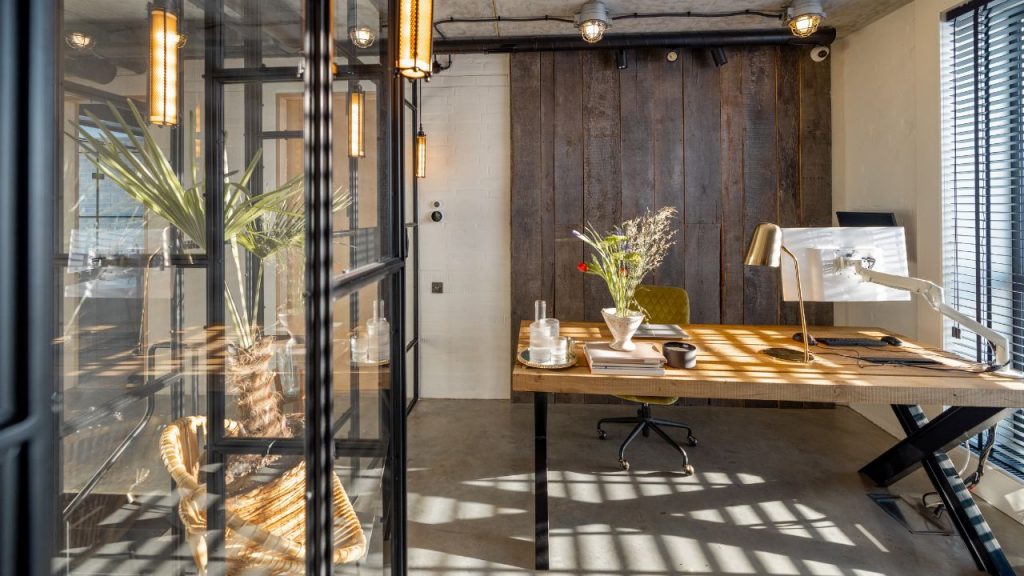
2. Equipment Cost
Equipment covers almost everything you see inside an office. Desk, cabinets, bookshelf, computers, AC, and even the printer. In case, you need a particular machine to operate the business, that’s included too.
The purchase price of the equipment or furniture is deductible. It’s true for even a separate telephone line or internet bills. If the decor item is not just for show and can be used for any office-related function, you can keep it under the “equipment” category and ask for a tax break.
3. Routine Maintenance
Apart from the purchase price, you might need to pay fees for regular maintenance. For example, if you own an aquarium to enhance the beauty of your office room, it will require regular maintenance. You have to buy tank accessories and so on. This whole process is tax deductible.
However, you must prove to the authorities that, the fish tank is located inside the office area and contributes to your business anyhow.
4. Repairs
One mistake many taxpayers make is mixing repairs with improvements. Let’s clarify the doubt for good. You see, improvement refers to the cost you undertake to expand or enhance the current office/home. It can be painting walls, tiling floors, expanding the Porsche, and so on. It increases the tax basis for your home/office.
On the other hand, repair costs are only meant to fix any damage occurred within the home office. It doesn’t increase the office’s total tax basis. The main purpose is to avoid a reduction in value. For example, fixing the electronic connections, changing the fuse, snow plowing, roof fixing, and so on.
If your office interior requires fixing/repairing, the cost will fall into this category. And, that’s 100% eligible for tax exemption.
What’s The Actual Tax Law For Home Office Decor?
Section 179 talks about the deductions you can claim for home office decor or equipment. Small businesses have been taking advantage of this tax law for so many years.
Here’s how it works. The main purpose of this law is to remove the year-by-year depreciation system. Suppose you bought a piece of equipment for $500 and it is estimated to last for 5 years. So, per year depreciation cost is (500/5) = $100.
Following the depreciation rule, you are only eligible for a $100 exemption each year for that specific equipment. It will go on for 5 consecutive years. That’s troublesome for most businessmen.
That’s why section 179 was introduced. It ensures that you get to receive the whole tax benefit in one go. So, if the equipment is used for office purposes, according to section 179, you can claim the full $500 tax deduction.
Section 179 is really the holy grail for home offices. You have no idea how much cash you can save every year even for the decors and equipment.
Bonus Depreciation – Let’s Understand
If the office equipment is bound to natural wear and tear, it is eligible for a tax reduction. Logically, home office items lose their usefulness as they age. So, why should the authority charge the same amount of tax when the output from those items is significantly less?
And as long as you stay within the limit of your spending cap, you can make use of both the direct write-off and bonus depreciation. Currently, the tax authorities are supporting up to 80% of bonus depreciation. It is imposed on the leftover amount you get after writing off up to $1,160,000.
Suppose you bought a home office equipment for $1,200,000. After calculating the direct write-off, we get ($1,200,000-1,160,000)= $40,000. So, $40,000 is eligible for the 80% bonus depreciation. It gives us (40,000×0.8)= $32,000.
That’s the amount to be deducted on top of the direct write-off.
How Much Can You Save Under Section 179?
All the numbers might seem a bit overwhelming. But the calculation is actually pretty easy ( we promise). Just follow the table below and you will be able to estimate your yearly home office tax deduction.
| Equipment purchase | $1,400,000 |
| Equipment Write-off | $1,160,000 |
| Bonus depreciation (80%) | $192,000 |
| Total deduction | $1,352,000 |
| Cash saving (tax rate 35%) | $473,200 |
| New cost on equipment purchase | $926,800 |
As you can see, the initial equipment purchase cost was $1,400,000. However, after receiving the tax benefit, you are actually paying $926,800. That’s a total saving of $473,200. Now, is there anyone who wouldn’t want forty grand every year without doing anything?
Now, what if the item you purchased for the home office costs below $1,160,000? Here’s what the table would look like.
| Equipment purchase | $1,000,000 |
| Equipment Write-off | $1,000,000 |
| Bonus depreciation (80%) | $0 |
| Total deduction | $1,000,000 |
| Cash saving (tax rate 35%) | $350,000 |
| New cost on equipment purchase | $650,000 |
What Are The Changes In Section 179 For 2023?
We have noticed some remarkable changes in section 179 for the year 2023. The maximum spending cap is decided to be $4,050,000. If your total equipment purchase crosses this limit, you would lose the tag of “small business tax incentive.” That means, all the tax benefits we just discussed won’t be applicable to you anymore.
Your business will enter the “big business” category which is not subjected to section 179. The maximum spending limit used to be around $3,780,000. There is an increase of a total $270,000.
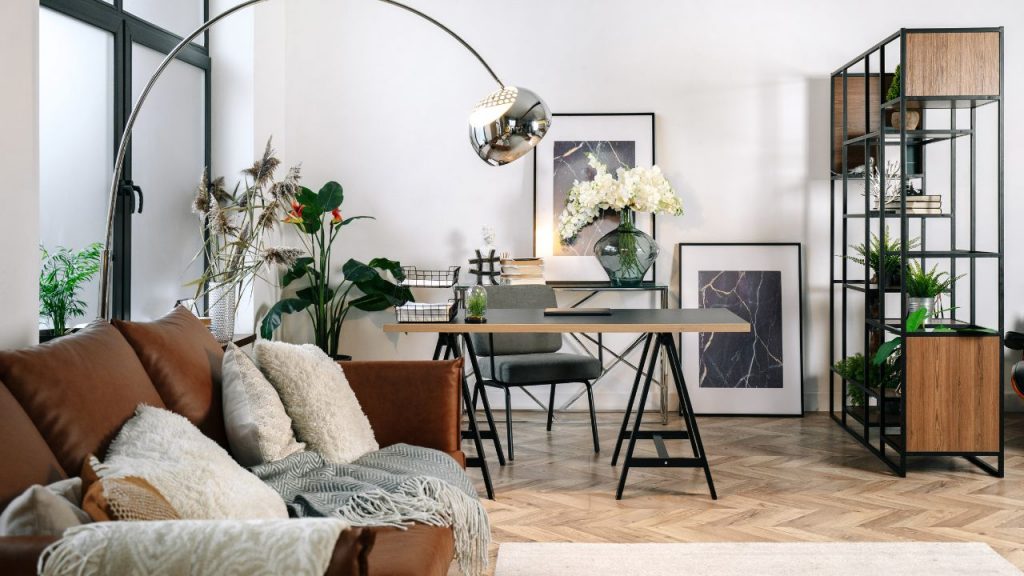
Can You Write-Off Home Office Artwork?
By “artwork” we mean paintings and antique decor pieces you install in the home office. Most of the time, people use them to enhance office aesthetics.
But, when it comes to writing it off completely, the rule is a bit tricky. You can go ahead and bring exquisite and antique desks, lamps, or vintage sofa sets for the office room. But it has to serve a purpose within the office.
For example, even though the desk is antique and probably expensive, you are using it to carry stationeries and files. That’s totally acceptable. You can claim a tax deduction for such art pieces sitting in your home office.
However, the problem arises when the artwork is in a form of a collectible. You see, the decor piece needs two characteristics to be included in the tax return file: I) must have tangibility and usefulness to the business, II) susceptible to wear and tear as they age.
However, when you are only collecting vintage items, they lack both qualities (no usefulness, no depreciation). Hence, tax officers might refuse to give you the incentive cut you want.
So, if you are really keen on bringing eye-pleasing office decor, make sure you also make them useful to your work somehow.
Are You Eligible For The Write-Off?
Before you think about writing off home office decor, you must be eligible for a home office tax deduction.
Yeah, it sounds like anyone working from their living room can apply under this category. But it’s far from the truth.
You must have a separate home office dedicated to your small business. The term “business” is very important. If you are an employee of any organization who prefers to work remotely, home office deduction is not for you.
It’s crucial to be a businessman or independent contract worker (freelancer), agent, consultor, etc. Once you have made sure of that much, use the office as your principal way of dealing with the business. For example, a real estate agent spends more time outside the office. It will be hard to convince the tax officials whether you actually need it or not.
If you lack one or two characteristics, work on those first. Otherwise, having a deductible repair or decor cost won’t be applicable.
Before You Go!
It’s super important to make sure your eligibility as a remote worker. It doesn’t matter what you think. You must fulfill the criteria announced by the authority. Check out our discussion on home office tax deduction laws if you are not self-employed. Hopefully, that will give you a better insight into the topic.

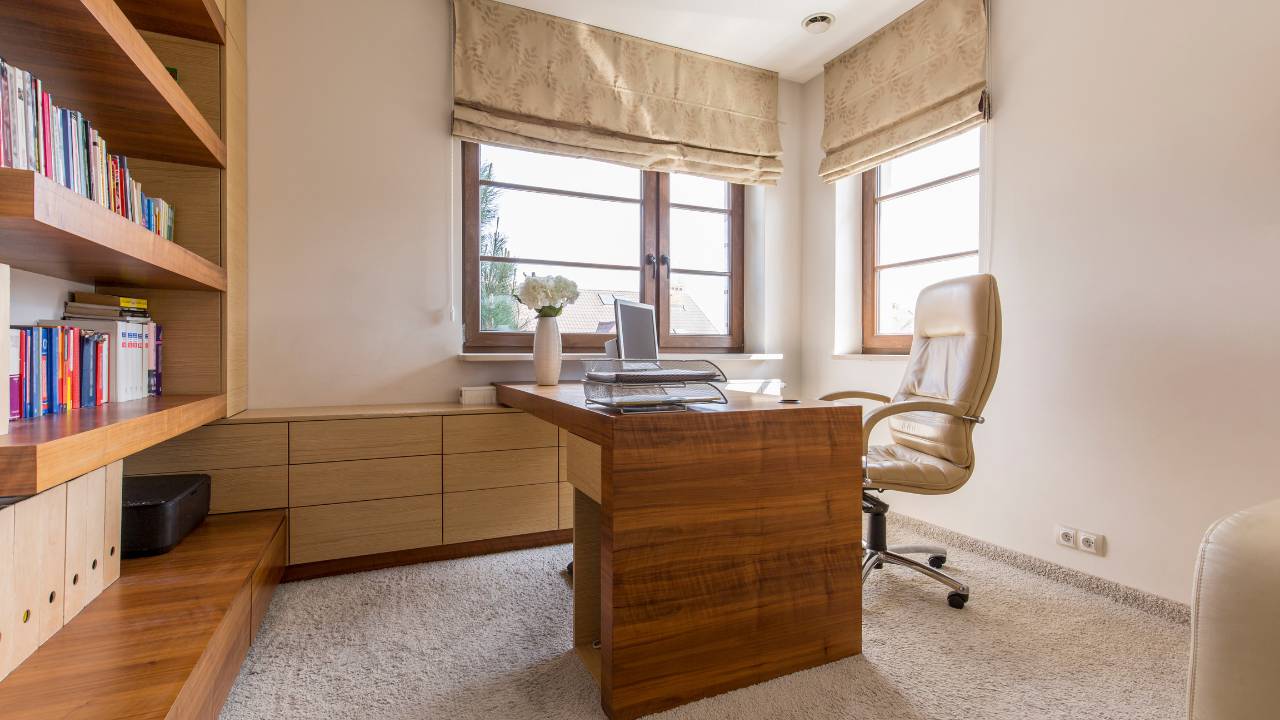
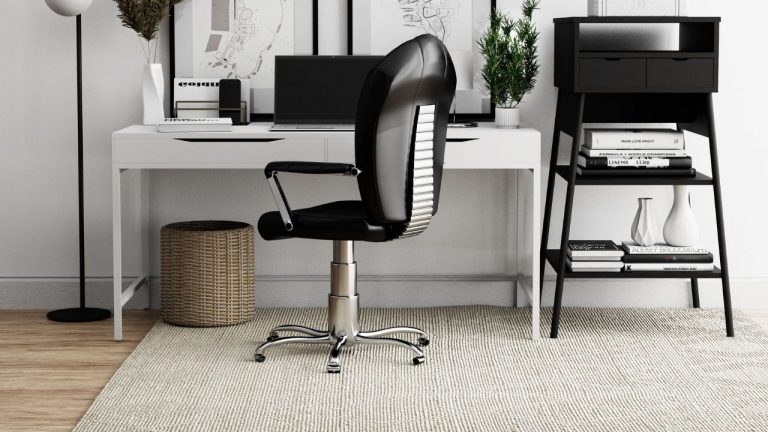
![Setting Up A Home Office Desk Against A Window [Beginners Guide]](https://homethereby.com/wp-content/uploads/2022/01/Setting-Up-A-Home-Office-Desk-Against-A-Window-768x432.jpg)
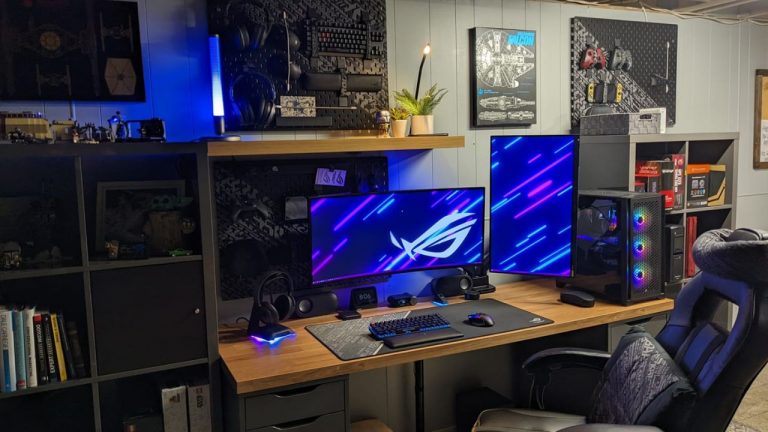
![Where Should You Place Desk In Home Office? [ Practical Guide]](https://homethereby.com/wp-content/uploads/2022/07/How-To-Connect-2-Monitors-1-Laptop-On-A-Small-Desk-768x432.jpg)
![Can You Set Home Office In Your Bedroom? [Pros & Cons]](https://homethereby.com/wp-content/uploads/2022/05/Can-You-Set-Home-Office-In-Your-Bedroom-768x432.jpg)
![Rug Placement In Home Office [Everything You Need To Know]](https://homethereby.com/wp-content/uploads/2022/01/Rug-Placement-In-Home-Office-768x432.jpg)